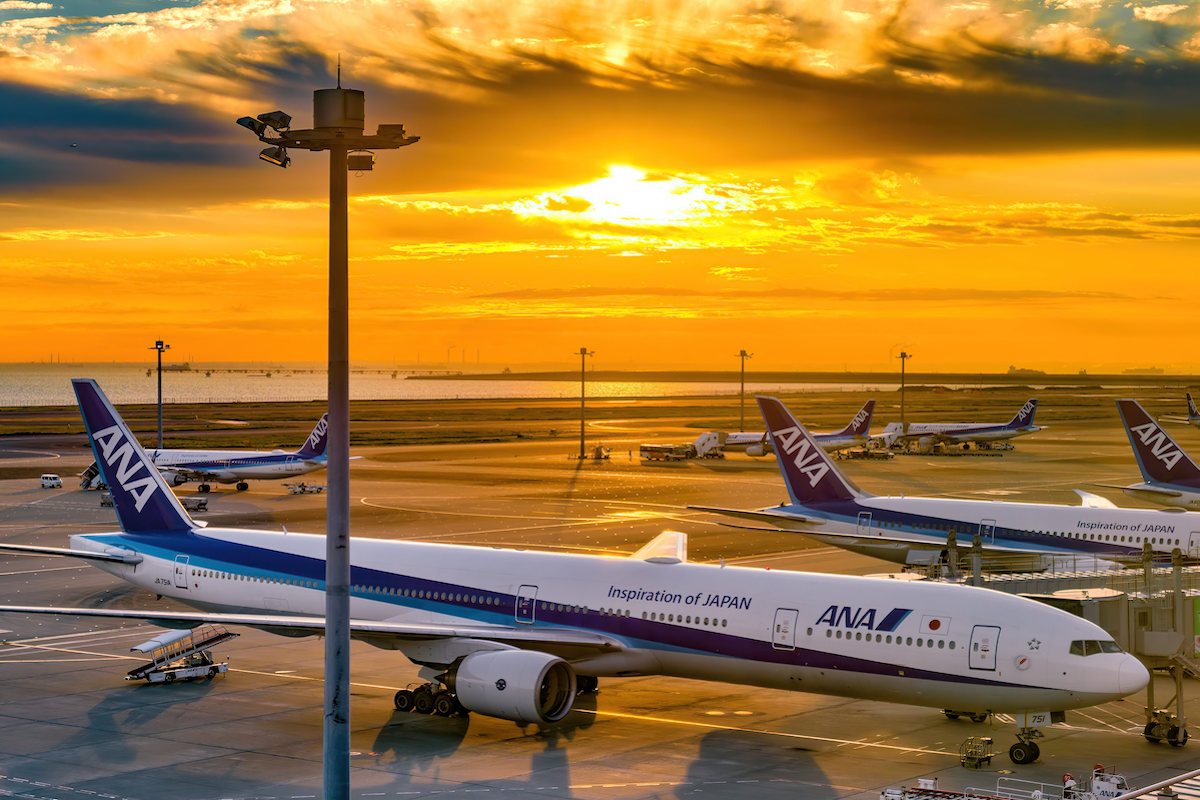ANA Leverages Asia Network by Moving Flights to Tokyo Narita

Photo Credit: ANA Is shifting some long-haul flights to Narita from Haneda to expand connectivity. Flickr / https://flic.kr/p/2k4Euy4
All Nippon Airways (ANA) is in the process of moving several of its North American flights to Tokyo's Narita International Airport to offer better connections across its Asian network. The move reverses an almost decade-long trend of shifting flights to the city's close-in Haneda Airport.
Like most of its peers in the region, ANA's international network is operating at a fraction of its pre-pandemic capacity. North America flights remain relatively strong, but business traffic remains down significantly, while visiting friends and relatives and traffic has begun to rebound. Moving North America flights from Haneda — a popular airport with business travelers going to Tokyo — capitalizes on these trends and leverages as much of ANA's international network as feasible, the carrier said in its financial results for the nine months ending in December on Tuesday.
The move, however, reverses the long-term trend toward more Haneda flights, both by Japanese and U.S. carriers. In the 2010s, Delta Air Lines spearheaded a long-fought battle between the Japanese and U.S. governments for more access to Haneda and, following the receipt of five additional slot pairs at the airport in 2019, dismantled the hub at Narita that it had inherited from Northwest Airlines.
ANA's move is the latest salvo in what is the slowest-moving game of ping pong in the airline industry. Narita opened with great fanfare in the 1970s to alleviate congestion at Haneda, which then served as domestic-only airport until the early 2000s when limited international flights resumed within Asia. And when the Japanese government opened a few slots for long-haul international flights in 2010, U.S. carriers pounced. And now the cycle, at least temporarily while business travel remains down, reverses.
ANA flew only about 10 percent of its pre-pandemic international passenger traffic last year, due to both the Delta and Omicron variants and government travel restrictions. Load factors on its international flights averaged 25 percent, up about 3 points from the previous fiscal year.
The domestic network performed much better, especially after Japan lifted its state of emergency in September and eased some travel restrictions. After that, the carrier saw demand for its domestic flights jump sharply. Demand in the last quarter of 2021 was the strongest the carrier has seen since the pandemic began, and passenger traffic in the quarter reached 50 percent of pre-pandemic levels. ANA said it shifted its schedules to operate more weekend and holiday flights in the quarter to capture more leisure travel demand.
Peach, the company's low-cost subsidiary, had a particularly strong December quarter with passenger traffic exceeding pre-pandemic levels. For the last nine months of 2021, the discounter's capacity was 50 percent higher than in the same period in 2020.
Peach and cargo helped fuel ANA to a profitable final quarter of the year. The cargo operation reported its fifth consecutive record quarter. Revenues for the nine months were ¥238 billion ($2.1 billion), up 134 percent from last year. ANA forecasts continuing high cargo demand in this fiscal year as maritime transport is expected to remain constrained. Because of this but unlike most other airlines around the world, ANA will continue operating preighters — or passenger aircraft with the seats removed in order to carry small package freight — to transport automotive parts, semiconductors, and vaccines, the carrier said.
ANA did not offer capacity guidance for this fiscal year. However, Japan Airlines on Tuesday updated its capacity guidance for February. JAL will operate 68 percent of its planned February domestic schedule, which translates into a reduction of 273 flights per day.
ANA reported an operating loss of ¥116 billion in the last nine months of the year on revenues of ¥738 billion. For the fiscal year that ends on March 31, ANA forecasts revenues of ¥1 trillion, or a 332 percent increase from the previous fiscal year. The results are expected to generate an operating loss of ¥125 billion.
